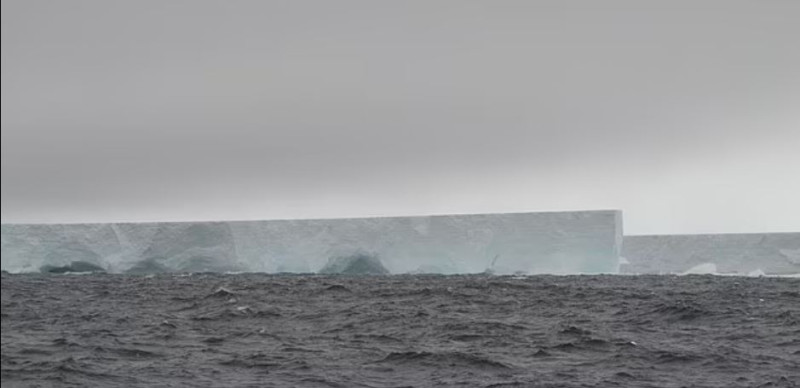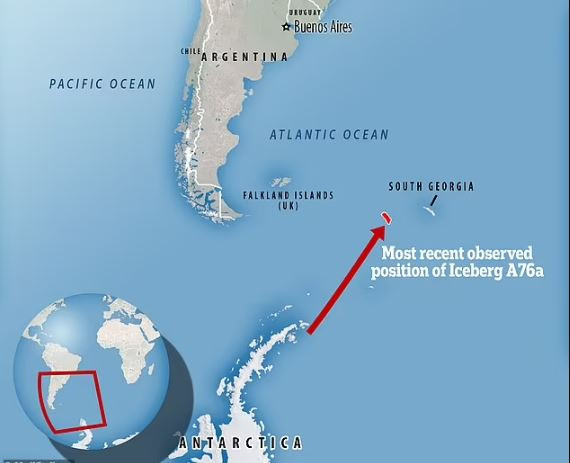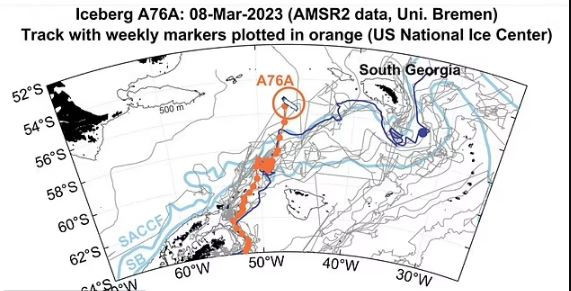A huge iceberg the size of Great London has broken off Antarctica’s Brunt Ice Shelf – and could wreak havoc on shipping vessels as it begins to break up into smaller pieces
Two of the world’s largest icebergs – including one the size of London and an even bigger one the size of Cornwall – are being monitored by British scientists.
There is concern that the frozen behemoths are drifting into areas where they could affect shipping, fisheries and wildlife.
The massive A81, which is as big as the capital of England, broke away from Antarctica’s Brunt Ice Shelf at the end of January.
Glaciologist Dr Oliver Marsh, who returned from the British Antarctic Survey’s (BAS) Halley Research Station, said: “It was something we knew was coming.”
“BAS has been monitoring the Brunt Ice Shelf and the chasms forming on it for over a decade.”
the largest floating iceberg on the planet – as big as the English county of Cornwall – is 135 kilometers long and 25 kilometers wide.
There are fears it could move east towards South Georgia and get stuck in the shallow waters of the continental shelf, or possibly head for the nearby islets known as Shag Rocks.
In both of these areas it could cause problems for local wildlife and people.
If the iceberg falls to the area’s shallow seabed, it could destroy seafloor fauna and disrupt ocean currents and the foraging routes of local wildlife.
In addition to the ecological impact, icebergs in the South Georgia region can pose a great danger to local ships.
Antarctic ice sheets contain 70% of the world’s fresh water – and sea levels will rise 180 feet if they melt
Antarctica has a huge amount of water.
The three ice sheets covering the continent contain about 70 percent of our planet’s fresh water – and all of it is due to warming air and oceans.
If all the ice sheets were to melt due to global warming, Antarctica would raise global sea levels by at least 183 feet (56 meters).
Given their size, even small losses in the ice sheets could have global consequences.
In addition to rising sea levels, meltwater will slow global ocean circulation, while shifting wind belts may affect climate in the southern hemisphere.
In February 2018, NASA revealed that El Niño events cause Antarctic ice to melt by up to ten inches (25 cm) each year.
El Niño and La Niña are separate events that change the water temperature of the Pacific Ocean.
The ocean periodically oscillates between warmer than average during El Niño and cooler than average during La Niña.
Using Nasa satellite imagery, researchers have discovered that oceanic effects are causing Antarctic glaciers to melt while increasing snowfall.
In March 2018, it was revealed that a giant iceberg the size of France in Antarctica is floating in the ocean more than previously thought.
This has raised fears that it could melt faster as the climate warms and have a dramatic impact on sea level rise.
Source :Skai
With a wealth of experience honed over 4+ years in journalism, I bring a seasoned voice to the world of news. Currently, I work as a freelance writer and editor, always seeking new opportunities to tell compelling stories in the field of world news.














